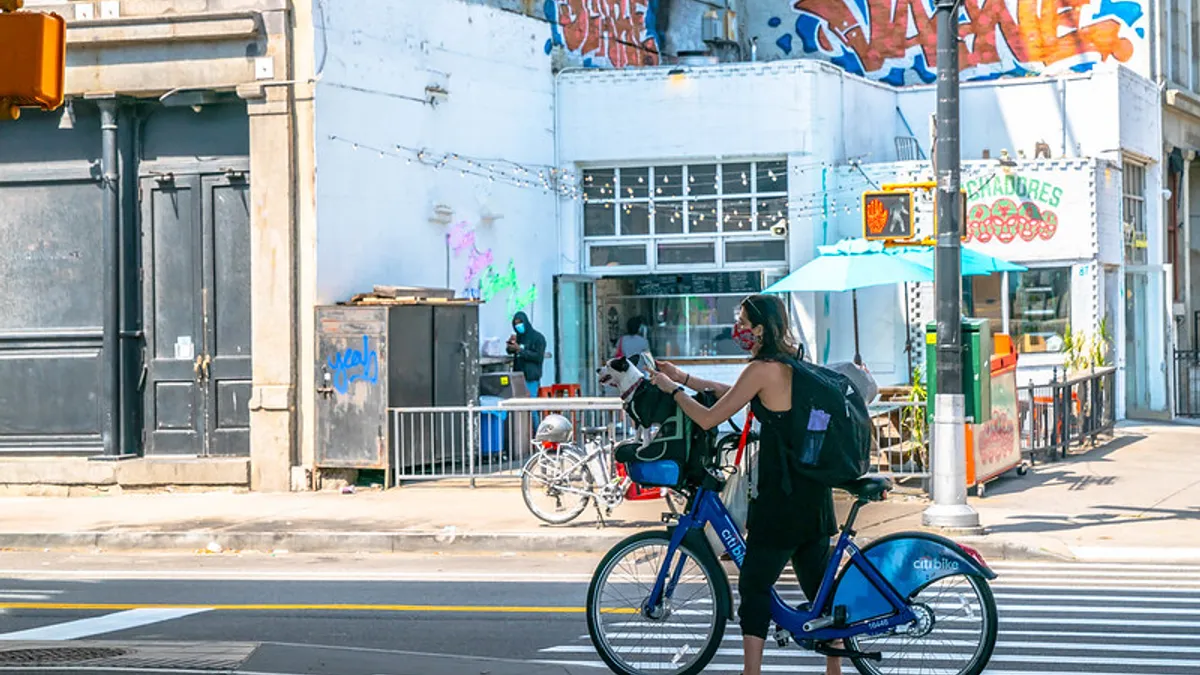Dive Brief:
-
The five riskiest states for cycling, in order, are Delaware, South Carolina, Florida, Louisiana and New Mexico, according to a new analysis from mobility analytics company StreetLight Data,
-
On the other end of the spectrum, the safest state is Massachusetts, followed by New York, Illinois, Pennsylvania and Utah.
-
StreetLight analyzed bike crashes in 48 contiguous U.S. states using "de-identified and aggregated Location-Based Services and GPS data." It assessed the rate of fatalities per bicycle miles traveled (BMT) instead of relying on fatalities per capita, which is the historical standard. "Unlike BMT, prior measurements didn’t take into account factors such as not everyone bicycles, or cycles the same amount," the company writes.
Dive Insight:
StreetLight’s analysis takes a new approach to calculating which states are the most dangerous for cyclists. Notably, its use of BMT alters which states were previously considered the most dangerous for cyclists, the company says. Some of the study’s findings conflict with those of the National Highway Traffic Safety Administration's (NHTSA) Fatality Analysis Reporting System (FARS), which ranks states and tracks cycling fatalities by fatal crashes per capita.
"It's not really fair to compare bike crashes to the entire population of a state or city when the vast majority of residents don't ride bicycles," StreetLight’s director of content, Phaedra Hise, said in an email interview. "It makes more sense to measure risk compared to actual bicycle travel — either BMT or number of bike rides, or people riding bikes — something more meaningful."
StreetLight’s ranking, for example, includes West Virginia and Mississippi among the top 10 most dangerous states for cycling, but those states are not among the top 10 on the FARS list.
The analysis comes as pedestrians and cyclists have faced an increasingly deadly time, in part due to drivers speeding during the pandemic. The Governors Highway Safety Association recently projected that the pedestrian fatality rate increased 20% during the first half of 2020.
Meanwhile, cycling activity was on the rise in many cities during the pandemic, increasing 11% year over year, on average, in September 2020 across 100 Census Bureau statistical areas.
"We all know that the pandemic put more people on bicycles, and anecdotally I see more families riding in my hometown of Richmond, Virginia," Hise said. "All citizens riding bikes deserve protection, but when you increase their numbers and add children and people new to cycling, the risk of conflict with vehicles really ramps up."
Pedestrian activity has also seen drastic changes amid the pandemic compared with normal patterns, with some pedestrian activity outside of city centers increasing or decreasing up to 100% in 2020 versus the year prior.
Those changes have created new challenges for urban planners, according to Hise. "We see planners kind of rethinking everything. Our agency customers are running more analyses to help them understand these changes in transportation," she said.
Despite the challenges, there is optimism among some cycling and transportation experts about the potential for the Biden administration's American Jobs Plan to invest in safer streets. The $2 trillion plan calls for $20 billion in safety improvements for all road users, including pedestrians and cyclists, and a new "Safe Streets for All" program that would fund state and local Vision Zero plans.












